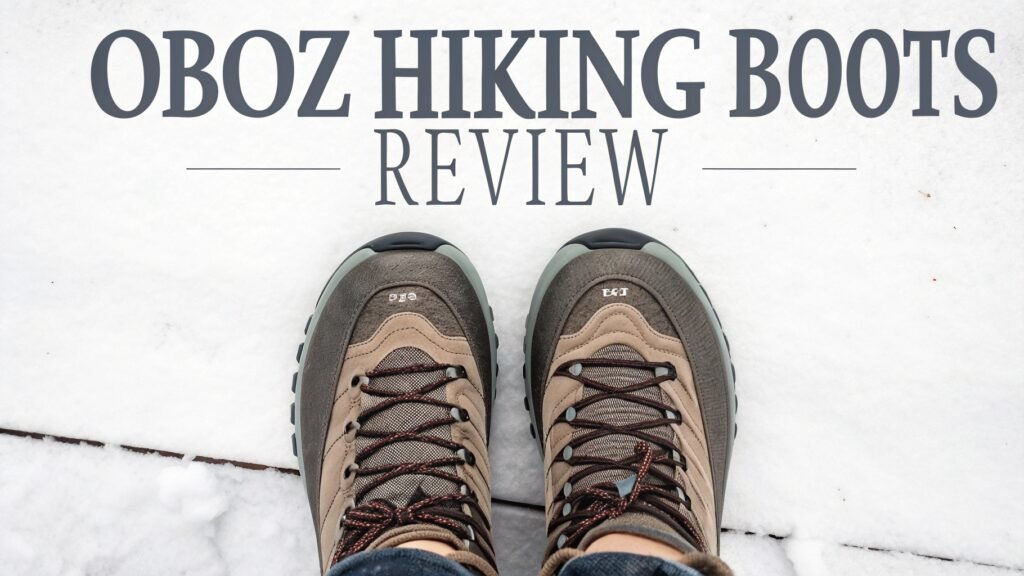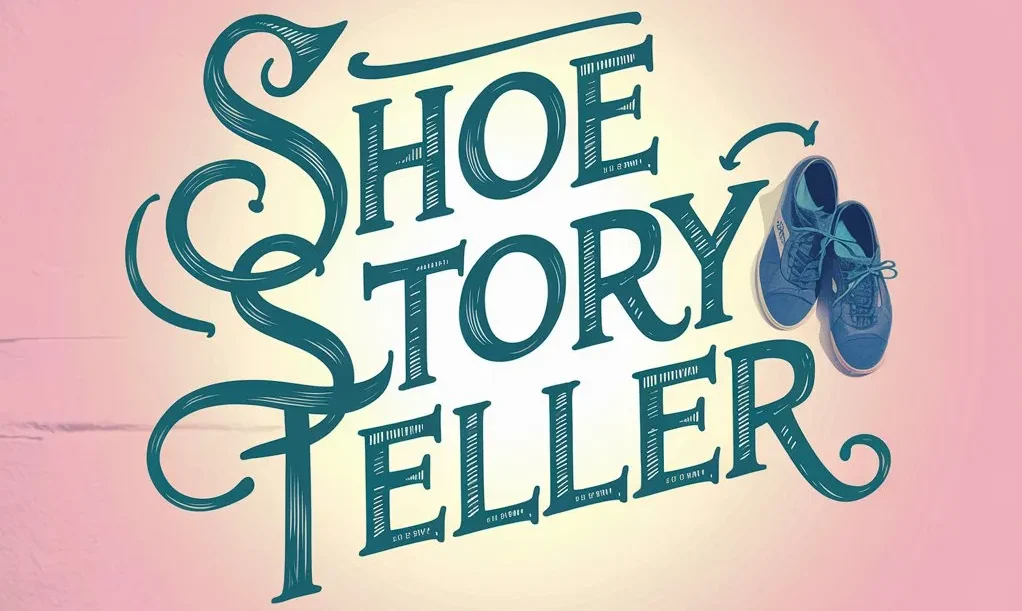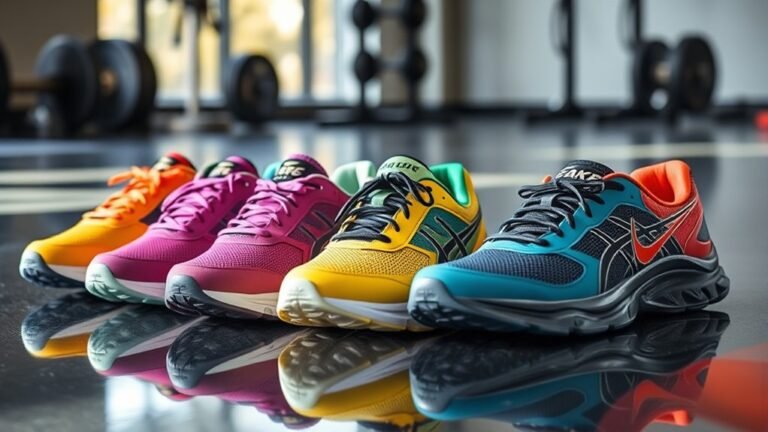Oboz Hiking Boots Review: Trail-Tested Performance for Every Adventure
When you step into the wilderness, your footwear becomes your most critical piece of gear. The right hiking boots can make the difference between an exhilarating adventure and a painful ordeal.
Oboz hiking boots have steadily gained recognition among serious hikers and casual outdoor enthusiasts alike for their exceptional comfort, durability, and performance on various terrains.
in Bozeman, Montana in 2007, Oboz (a name derived from “Outside Bozeman”) designs their footwear in an 18-million-acre natural laboratory that serves as both testing ground and inspiration source.

Key Takeaways:
- Oboz designs and tests all their hiking boots in Bozeman, Montana, using the surrounding 18-million-acre wilderness as their laboratory
- The company plants one tree for every pair of boots sold through their One More Tree program, with over 6 million trees planted since 2007
- Oboz boots feature proprietary B-DRY waterproofing technology that keeps feet dry while allowing sweat to escape
- The signature O-FIT insole system provides superior support with a deep heel cup, sculpted arch, and triple-density EVA cushioning
- Exceptional durability is consistently mentioned in user reviews, with many pairs lasting several years of heavy use
- Most Oboz boots have a shorter break-in period compared to other hiking boot brands
- The brand offers specific models for wide feet, particularly the Bridger series
- Oboz boots typically range in price from $140 to $200, positioning them in the mid-to-high price range
- Popular models include the Bridger (best for wide feet and support), Sawtooth (more breathable and flexible), and Katabatic (lightweight performance)
- Oboz boots generally run true to size but some models may require sizing up a half-size for winter hiking with thicker socks
- The company demonstrates environmental commitment through solar-powered offices and community volunteer programs
The Oboz Brand Story: Montana Roots and Environmental Commitment
The story of Oboz begins with a love for the outdoors and a commitment to quality footwear. Founded in 2007 by John Connelly, an industry veteran with over forty years of experience, Oboz was born in Bozeman, Montana. The name itself—a combination of “Outside” and “Bozeman”—reflects the brand’s deep connection to its natural surroundings.
What makes Oboz unique is how they use their backyard as both testing ground and inspiration source. The mountains around Bozeman serve as an 18-million-acre laboratory where designs are tested and refined before reaching consumers. This authentic connection to nature isn’t just marketing—it fundamentally shapes how their boots perform on real trails.
Environmental responsibility stands as a core value for Oboz from day one. For every pair of boots sold, the company plants one tree through their One More Tree program, resulting in over 6 million trees planted since 2007. Their Bozeman headquarters operates with solar power, reducing their electrical footprint, and employees receive annual volunteer hours to contribute to local conservation efforts.
In 2018, Oboz was acquired by KMD Brands, but they’ve maintained their Montana roots and commitment to quality. Sadly, founder John Connelly passed away in 2023 after a long battle with cancer, but his legacy continues in every pair of Oboz boots hitting the trails today.
Comfort and Fit: Why Hikers Love Oboz
Comfort might be subjective, but Oboz boots consistently earn praise for how they feel on the trail. The secret lies in their thoughtful design and attention to the fundamentals of foot biomechanics.
The O-FIT insole system forms the foundation of Oboz’s comfort advantage. Unlike many competitors who include basic foam insoles meant to be replaced, Oboz designs their insoles as an integral part of the boot’s performance. The deep heel cup cradles your foot securely while the sculpted arch support helps maintain proper alignment. Users with plantar fasciitis and other foot conditions often report significant pain reduction when switching to Oboz.
Most Oboz models feature a substantial but not excessive break-in period. The Bridger typically requires just a few short hikes before feeling fully comfortable, while the Sawtooth often feels good right out of the box. This contrasts with some traditional hiking boots that can require weeks of uncomfortable wear before conforming to your feet.
Regarding sizing, Oboz boots generally run true to size, though some users recommend going up a half-size if you plan to wear thick hiking socks or have wider feet. The Bridger specifically has earned a reputation for accommodating wide feet well without requiring the purchase of a wide-specific model, though wide versions are available for those who need maximum volume.
The heel capture in Oboz boots receives particular praise. The combination of heel cup design and lacing system allows for a secure fit that prevents heel lift—a common cause of blisters—while maintaining comfort around the ankle bones. Many users report they can hike all day without hot spots developing, even on demanding terrain.
Durability: Are Oboz Boots Built to Last?
In a market where many hiking boots show premature wear, Oboz has established a reputation for exceptional durability. This longevity stems from both quality materials and thoughtful construction methods.
The nubuck leather uppers used in models like the Bridger resist abrasion far better than synthetic materials used in many competing boots. Users report their Oboz leather boots maintain structural integrity and appearance even after hundreds of miles on rough terrain. The leather also molds to the foot over time, enhancing comfort while maintaining support.
Strategic reinforcement in high-wear areas contributes significantly to durability. The rubber toe caps protect against rock strikes and abrasion, while the heel counters maintain their structure even after extended use. These reinforced areas prevent the premature failure points common in lesser boots.
The stitching quality on Oboz boots receives particular praise. Double and triple stitching at critical junctures prevents the seam failures that often lead to warranty claims with other brands. Users report that even after years of use, the stitching remains intact with minimal fraying.
The outsole durability varies slightly between models but generally exceeds expectations. The Granite Peak outsole on the Bridger series maintains its lug pattern and grip even after hundreds of miles, though some users report slight compression of the EVA midsole over time—an unavoidable characteristic of all EVA foam.
Many users report getting 3-5 years of regular use from their Oboz boots before needing replacement, representing excellent value despite their higher initial price point. This longevity makes them a smart long-term investment for regular hikers.
Waterproofing: How the B-DRY System Performs
Keeping feet dry ranks among the most important functions of quality hiking boots, and Oboz’s proprietary B-DRY waterproofing system has proven itself a reliable performer in real-world conditions.
The B-DRY system uses a multi-layer approach to moisture management. The outer layer typically consists of water-resistant materials like treated leather or synthetic fabrics that shed light precipitation. Beneath this, a waterproof membrane blocks liquid water while allowing water vapor to escape. The innermost layer wicks moisture away from the foot to enhance comfort and reduce blister risk.
In practical testing, the B-DRY system performs admirably in most conditions. Users report successfully crossing shallow streams, hiking through prolonged rain, and traversing wet meadows without water penetration. The system particularly excels in mixed conditions where both external moisture and foot sweat must be managed simultaneously.
Compared to GORE-TEX, which Oboz uses in some models like the Katabatic GTX, the B-DRY system offers comparable waterproofing with slightly less breathability. However, the B-DRY boots typically cost less than their GORE-TEX counterparts while delivering similar practical performance for most hikers.
Like all waterproof membranes, B-DRY has limitations. In extremely hot conditions, no waterproof boot can release sweat quickly enough to prevent dampness. Similarly, prolonged submersion will eventually overcome any membrane-based waterproofing system. For these extreme conditions, Oboz offers non-waterproof versions of many models that prioritize ventilation over water resistance.
The durability of the waterproofing receives positive reports, with many users experiencing reliable performance throughout the lifespan of the boots. This contrasts with some competitors whose waterproofing deteriorates significantly before the boot itself wears out.
Traction and Support: Trail Performance That Matters
When you’re navigating uneven terrain, the traction and support provided by your hiking boots become critical safety features. Oboz designs their outsoles and support systems with specific trail conditions in mind.
The Granite Peak outsole found on the Bridger series features aggressive 4mm directional lugs arranged in a pattern that sheds mud effectively while gripping a variety of surfaces. The deep heel brake provides confident downhill traction, while the forefoot flexibility allows natural movement. Users report exceptional grip on loose dirt, mud, and wet rocks—conditions that challenge many hiking boots.
The Sawtooth outsole takes a different approach, with a pattern of multi-directional lugs that includes side wall lugs for off-camber traction. This design performs particularly well on sandy or gravelly trails where maximum surface contact improves stability. Though slightly less aggressive than the Granite Peak outsole, the Sawtooth pattern offers versatile performance across varied terrain.
For ankle support, the mid-height models utilize a combination of leather/textile uppers and structured ankle collars that provide stability without restricting movement. Users report feeling confident on uneven terrain while maintaining natural stride patterns. The boots strike a balance between the rigid support of traditional hiking boots and the freedom of trail runners.
The TPU chassis found in models like the Bridger adds torsional rigidity that prevents foot fatigue on long hikes while still allowing proper flex at the ball of the foot. This feature proves particularly valuable when carrying a backpack, as it helps distribute load more evenly across the foot.
For hikers with specific support needs, the O-FIT insole system provides an excellent foundation that can accommodate custom orthotics if needed. The sculpted arch support and deep heel cup work together to promote proper alignment and prevent overpronation on uneven terrain.
Value Proposition: Are Oboz Boots Worth the Price?
With most Oboz hiking boots priced between $140 and $200, they position themselves in the mid-to-high range of the hiking footwear market. Determining whether they represent good value requires looking beyond the price tag to examine longevity, performance, and the complete package of features.
The durability factor significantly enhances the value equation. Many users report their Oboz boots lasting 3-5 years of regular use, compared to 1-2 years for less expensive alternatives. When calculated as cost per mile or cost per hiking day, Oboz often outperforms budget options despite the higher initial investment.
The included O-FIT insole represents substantial added value. Many hiking boots come with basic insoles designed to be replaced with aftermarket options costing $30-50. The quality of the Oboz stock insole eliminates this additional expense for most users.
Oboz’s environmental initiatives may also factor into the value calculation for environmentally conscious consumers. The One More Tree program means each purchase contributes to reforestation efforts, adding a social benefit beyond the personal utility of the boots.
The warranty support further enhances value. Though Oboz doesn’t offer a lifetime guarantee like some premium brands, they do stand behind their products with responsive customer service and reasonable warranty coverage for manufacturing defects.
When compared to direct competitors like Vasque, Merrell, and Keen in similar price ranges, Oboz generally offers superior durability and insole quality while matching or exceeding performance specifications. Against premium brands like Scarpa or Zamberlan, Oboz provides comparable practical performance at a lower price point for most recreational hikers.
Wide Feet Solutions: Finding Comfort in Oboz Boots
For hikers with wide feet, finding boots that provide proper fit without pressure points can be challenging. Oboz has earned particular recognition for accommodating wider foot shapes effectively.
The Bridger series receives the most praise from wide-footed hikers. Even in standard width, the Bridger offers a roomier toe box than many competitors while maintaining proper heel lock. For those needing maximum volume, the Bridger is also available in dedicated wide sizes that provide additional space throughout the boot.
The foot shape of Oboz boots tends to favor a wider forefoot with good arch support and secure heel fit. This accommodates the natural splaying of toes during hiking while preventing the heel slippage that can cause blisters. Users with bunions or hammertoes often find the Oboz toe box allows enough space for comfort without sacrificing support.
For sizing recommendations, many wide-footed hikers report success with their normal length size in Oboz wide models, though some prefer going up a half-size for additional volume. The lacing system allows for customized tension across different parts of the foot, helping accommodate varying foot shapes.
The insole design also benefits wide feet. The supportive O-FIT insole helps maintain proper alignment without creating pressure points, and the deep heel cup keeps the foot properly positioned rather than allowing it to slide forward into a potentially narrow toe box.
Based on customer reviews, the Bridger represents the best Oboz option for wide feet, followed by the Sawtooth, which also accommodates width reasonably well. The more athletic-inspired Katabatic series tends to run slightly narrower and may be less suitable for wide feet.
Breaking In Your Oboz Boots: Tips for Comfort From Day One
While Oboz boots generally require less break-in time than traditional all-leather hiking boots, following proper break-in procedures enhances comfort and extends the life of your footwear.
Start by wearing your new boots around the house for several hours over a few days. This allows the boots to begin conforming to your feet in a controlled environment where you can remove them if discomfort develops. Wear the same socks you plan to use for hiking to ensure accurate fit assessment.
Progress to short neighborhood walks of increasing duration. These low-stakes outings help identify any potential hot spots before you’re miles from your car on a trail. Apply moleskin or hiking tape to any areas that show early signs of friction.
The lacing technique significantly impacts comfort during break-in. Experiment with different patterns to find what works best for your foot shape. Many hikers find success with “surgeon’s knots” at the ankle bend to prevent heel slippage while keeping the forefoot lacing looser.
Heat molding the insoles can speed the break-in process. Some hikers report success warming the O-FIT insoles with a hair dryer on low setting for 30 seconds, then immediately inserting them into the boots and wearing them as they cool to create a custom footbed.
Most Oboz boots reach peak comfort after 15-20 miles of hiking. The Sawtooth series typically breaks in faster than the Bridger due to its more flexible construction and greater use of textile materials. Full leather models like the Bridger require more time but ultimately mold more precisely to your feet.
For stubborn break-in issues, consider professional boot stretching services at outdoor specialty retailers, which can target specific pressure points without compromising the boot’s overall structure and support.
Frequently Asked Questions
Are Oboz boots good for wide feet?
Yes, Oboz boots, particularly the Bridger series, are excellent for wide feet. They offer a roomier toe box while maintaining good heel support. Many models are available in dedicated wide sizes for those needing maximum volume.
How long do Oboz hiking boots last?
With proper care, Oboz hiking boots typically last 3-5 years of regular use. Many users report getting 800-1,000 miles from a single pair before needing replacement.
Should I size up in Oboz hiking boots?
Most users find Oboz boots run true to size. If you plan to wear thick hiking socks or have wider feet, consider going up a half-size. For winter hiking, sizing up slightly accommodates thicker socks.
Which is better: Oboz Bridger or Sawtooth?
The Bridger offers more support, durability and protection, making it better for rugged terrain and heavy loads. The Sawtooth is more flexible, breathable and typically requires less break-in time, making it ideal for warmer conditions and lighter hiking.
Is Oboz B-DRY as good as GORE-TEX?
B-DRY provides comparable waterproofing to GORE-TEX with slightly less breathability. For most hiking conditions, the difference is minimal, and B-DRY models typically cost less than GORE-TEX alternatives.
How do I break in Oboz hiking boots?
Start by wearing them around the house, then progress to short walks before taking them on longer hikes. Most Oboz boots reach optimal comfort after 15-20 miles of wear. The Sawtooth series typically breaks in faster than the leather Bridger models.
Do Oboz boots have good arch support?
Yes, the O-FIT insole system provides excellent arch support with its sculpted medium-height arch. This helps maintain proper foot alignment and prevents fatigue on long hikes.
Are Oboz boots worth the price?
Considering their durability, comfort, and performance features, Oboz boots represent good value despite their higher initial cost. Their longevity makes the cost per mile lower than many less expensive alternatives.

Mia Smith is the founder of Shoe Storyteller, a blog that celebrates the art and stories behind shoes. With a passion for fashion and a flair for storytelling, Mia brings a unique perspective to the world of footwear.





